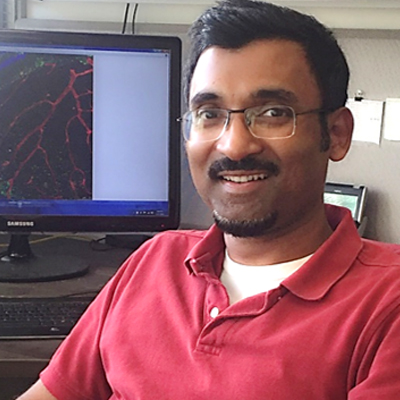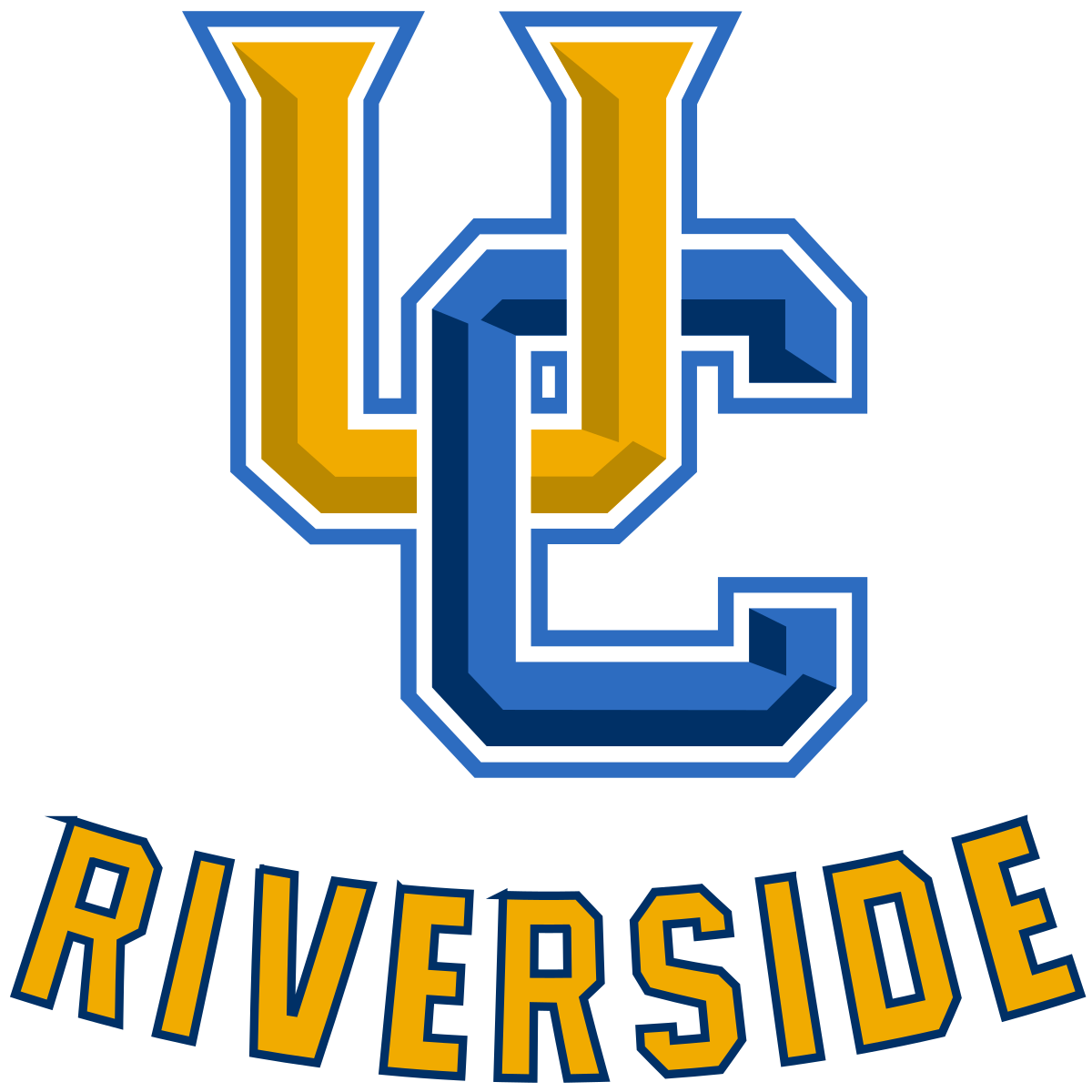Integrating the principles of physics, biology, and nanotechnology to combat chronic vascular inflammation associated with diabetic retinopathy and cardiovascular diseases
In the age of technology, we now enter an era in which diabetes is a rapidly increasing global epidemic. As a result, chronic vascular inflammation—a common feature and major determinant of many diabetic complications such as retinopathy and cardiovascular diseases—is escalating. By further understanding how chronic vascular inflammation occurs, Dr. Kaustabh Ghosh, Assistant Professor of the Department of Bioengineering at University of California, Riverside is developing new therapies so that the ever-expanding population of diabetics may have a better chance at living a quality life, without the debilitating effects of chronic vascular inflammation.
Common anti-inflammatory therapies used to treat diabetic complications, such as retinopathy (which leads to vision loss) and cardiovascular diseases, exhibit serious adverse effects, which include nausea, liver and kidney damage, and cataract formation. To address the lack of effective anti-inflammatory therapies currently on the market, Dr. Ghosh and his team are identifying a new class of molecular targets and developing superior nanotherapeutics that have minimal to no side effects.
As high glucose—the major risk factor for vascular inflammation in diabetes—circulates in the blood, it interacts with proteins and cells in the vessel wall and alters their function. Studies in large vessels, such as the aorta, show that high blood glucose in diabetes correlates with an increase in vessel stiffness. Yet, whether the increase in vessel stiffness actually causes vascular inflammation associated with diabetes has remained unknown. With an emphasis on diabetic retinopathy, Dr. Ghosh and his team are the first to demonstrate that high glucose leads to the stiffening of retinal vessels that, in turn, contributes actively to diabetic retinal inflammation. His team has also found a similar causative role of aortic stiffening in cardiovascular inflammation associated with diabetes. Importantly, if this vascular stiffening is blocked, then the inflammation associated with diabetes is significantly inhibited.
Thus, in essence, Dr Ghosh’s research shows that the stiffness of blood vessels alone can dictate vascular response to high blood glucose, that is, whether it will undergo inflammation or not, in much the same way that the tension (stiffness) of guitar strings (which is controlled by tuning knobs) alone can dictate the tune produced by the same set of strings and strokes.
Research in Dr. Ghosh’s laboratory focuses on vascular inflammation and nanomedicine. Working at the interface of basic and applied science, he is aiming to understand how cell- and extracellular matrix (ECM)-dependent mechanical cues regulate vascular inflammation in diabetic retinopathy, cardiovascular diseases, and age-related vision-loss and blindness. Simultaneously, his team is developing ‘site-targeting’ nanotherapeutic approaches that can selectively deliver therapeutic agents (pharmacological drugs, RNA, plasmids) to sites of vascular inflammation and achieve localized vascular normalization. To successfully pursue these goals, Dr. Ghosh and his bioengineering team are integrating the multidisciplinary principles and techniques related to bioengineering, vascular biology, inflammation, mechanobiology, and nanotechnology while also collaborating with leading experts in vascular inflammation and diabetic retinopathy research.
Current research projects include:
- Uncovering the Mechanical Control of Diabetic Retinopathy – Diabetic retinopathy (DR) is the leading cause of blindness in the working population (age 20-64). Unfortunately, current DR therapies are less effective in almost 50% of DR patients that have macular edema, a complication that results from excessive vessel leakiness and leads to significant vision loss and even blindness. Dr. Ghosh and his team are striving to develop new and more effective anti-inflammatory therapies for diabetic macular edema, with the knowledge that it is strongly regulated by retinal inflammation. His measurements are the first to reveal that retinal vessels become significantly stiffer in diabetic eyes, and that this increase in stiffness exacerbates retinal inflammation and vascular leakiness, the key determinants of diabetic macular edema. Work is currently underway to decipher the underlying vascular signaling pathways that convert the stiffness-dependent mechanical cues into intracellular biochemical responses in retinal vessels. By uncovering the previously unknown link between vascular stiffening and inflammation, this research will illuminate a previously unexplored territory in DR research, while identifying potentially new therapeutic targets for superior management of retinal inflammation associated with DR.
- Understanding the Role of Increased Vascular Stiffness in Cardiovascular Inflammation –Vascular inflammation is a hallmark of diabetic cardiovascular complications such as atherosclerosis. These conditions involve an increase in the stiffness of aortas and arteries, which are the major vessels that are commonly affected by inflammation. In this project, Dr. Ghosh and his team are understanding how the stiffness of the aorta contributes to immune cell binding to the aortic wall, which marks the earliest step in cardiovascular inflammation. So far, their studies have identified a mechanosensitive calcium ion channel as a novel regulator of matrix stiffness-dependent vascular inflammation. They are currently validating these in vitro findings in mouse models of diabetes and atherosclerosis. Simultaneously, they are also identifying and characterizing the upstream regulators of the stiffness-dependent mechanical control of vascular inflammation, with an initial emphasis on the role of epigenetic factors, such as microRNAs.
- Developing ‘site-targeting’ nanotherapeutics for local suppression of vascular inflammation – Concerning vascular inflammation in diabetic retinas, Dr. Ghosh poses the question, “How do we deliver potent anti-inflammatory drugs selectively to inflamed retinal vessels in the eye?” To address this question, Dr Ghosh and his team are employing the principles of nanotechnology to develop a new drug delivery approach that leverages the powerful anti-inflammatory properties of corticosteroids (steroid hormones for the eye), while avoiding its adverse side effects. With this novel strategy, Dr. Ghosh and his team are aiming to greatly improve the efficacy (benefit-to-risk ratio) and cost-effectiveness of existing and new anti-inflammatory therapies. The underlying hypothesis is that by packaging anti-inflammatory drugs within nanoparticles and then decorating the nanoparticle surface with site-targeting moieties, these drug-loaded nanoparticles can be delivered selectively to the site of retinal vascular inflammation for local anti-inflammatory therapy. Studies so far have revealed that this nanotherapeutic approach significantly improves the benefit-to-risk profile of anti-inflammatory therapy, reducing the effective drug dose by 70-fold lower dose. The goal is to reduce this drug dose to such a low level that eliminates all possible adverse effects associated with common anti-inflammatory therapies.
Bio
Intellectual curiosity, a hunger for creative freedom, and the desire to understand and discover new concepts motivated Dr. Ghosh to pursue a career in scientific research, and he has been the Assistant Professor in the Department of Bioengineering at University of California, Riverside since 2011. Earlier in his professional career, he was a postdoctoral research fellow in the Vascular Biology Program at Boston Children’s Hospital and Harvard Medical School. After receiving extensive and multidisciplinary training in the fields of vascular mechanobiology, bioengineering and nanomedicine, Dr. Ghosh began his independent research career to study the often overlooked role of blood vessel stiffness in chronic vascular inflammation.
His interest in vascular inflammation research stems from his knowledge of its role as a chief characteristic and a major determinant of most, if not all, debilitating and prevalent conditions, such as diabetic retinopathy, cardiovascular diseases and age-related vision loss. Though vascular inflammation has long been studied, not a lot of progress has been made in its treatment. So Dr. Ghosh asked himself, “What is missing from the picture and how can we better address it?”
With a multidisciplinary background, he was convinced he could make a difference in treating this condition. He knew that changes in the mechanical properties of tissues—namely its stiffness—contribute to many pathologies. He therefore wondered whether increased stiffness of blood vessels, which is often correlated with chronic vascular inflammation, could also play a causative role in this condition. Coupled with his nanomedicine research background, Dr. Ghosh knew he could develop an excellent delivery method for getting drugs directly to the target site and prevent local vascular stiffening and inflammation. Through his continued research, he aims to identify novel anti-inflammatory targets as well as use nanotechnological approaches to amplify the therapeutic effects of existing treatment so that a patient can be treated with the current working drugs with minimal to no adverse off-target effects.
In his free time, Dr. Ghosh likes to play chess, read books on philosophy, and watch European football and wild nature documentaries.
In the News
Publications
Awards
Hellman Fellowship, 2014
University of California Regents Faculty Fellowship, 2013
Postdoctoral Training Grant, NIH/NIBIB (T32) Interdisciplinary Research Training Program, 2008
President’s Award to Distinguished Doctoral Students, SUNY Stony Brook, 2006
Graduate Student Scholarship, New Jersey Center for Biomaterials, 2004
Outstanding Mentor Award, Siemens Foundation, 2004
Patents
Provisional Patent Application
Application No. 62/188,474: “Nanoliposomal Nitroglycerin Preparations, Methods of Making and Use Thereof”.


